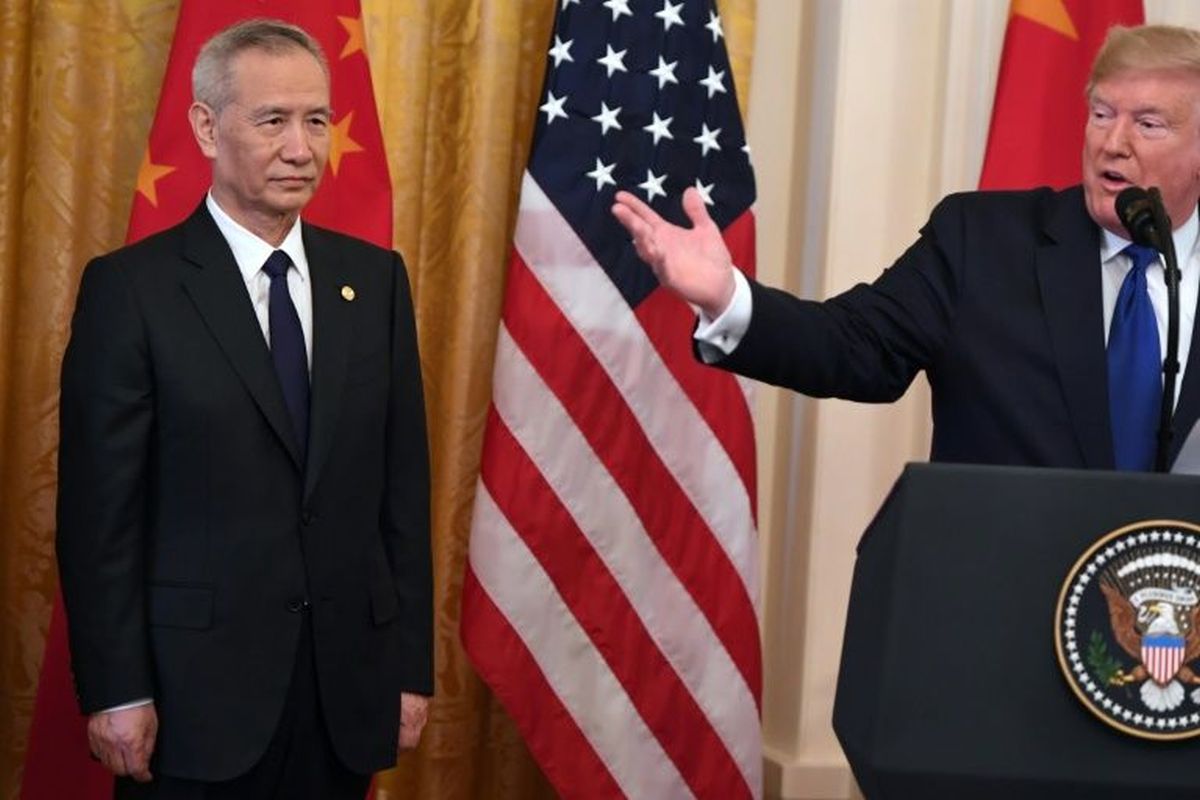US President Donald Trump signed a long-awaited “phase one” trade deal with China on Wednesday, which includes a massive increase in exports to the Asian economic power.
President Trump said at the White House signing ceremony, “Today, we take a momentous step, one that’s never taken before with China,” that will ensure “fair and reciprocal trade”.
“Together, we are righting the wrongs of the past”, Trump added.
The “phase one” agreement includes pledges from China to beef up purchases of American crops and other exports, provides protections for US technology, and new enforcement mechanisms.
China agreed to buy $200 billion more in US goods over two years than it did in 2017 before the trade war erupted, according to the agreement.
The agreement will also roll back some tariffs, defusing an 18-month conflict between the world’s two largest economies.
The deal would include $50 billion in additional orders for US agricultural products, Trump said, adding he was confident that US farmers would be able to meet the greater demand. He also said China would buy $40 billion to $50 billion in additional US services, $75 billion more in manufacturing goods, and $50 billion more worth of energy supplies.
Officials from both countries have touted the deal as ushering in a new era for US-Sino relations, but it fails to address many of the structural differences that led the Trump administration to start the trade war in the first place. They include Beijing’s long-standing practice of propping up state-owned companies and flooding international markets with low-priced goods.
After nearly two years of conflict and the exchange of punishing tariffs that have had a negative impact on business investment and global economic growth, President Donald Trump last month announced a “phase one” trade deal with Beijing.
On December 21, President Trump said that the United States and China would “very shortly” sign their so-called Phase One trade pact.
The Phase One deal was announced as part of a bid to end the months-long tit-for-tat trade war between the world’s two largest economies, which has roiled markets and hit global growth.
According to the two countries, the phase one agreement addresses issues including technology transfer, intellectual property, trade expansion and the establishment of mechanisms for dispute resolution.
China had called for a rollback of existing tariffs, to which Trump has said he did not agree. American officials want large purchases of US farm exports.
In September, the US had imposed fresh tariffs on $112 billion worth of Chinese imported goods, marking a sharp escalation of the bruising trade war between the world’s two largest economies.
(With inputs from agency)












